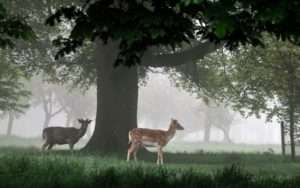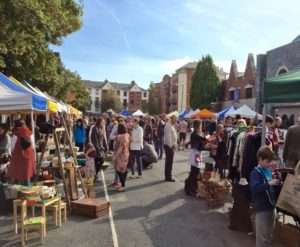 As Ireland celebrates Bloomsday – a commemoration of the seminal novelist James Joyce – Telegraph Travel raises a pint of the black stuff to the city where he was born, Dublin, which captivates us for a good many reasons, a few of which are listed below.
As Ireland celebrates Bloomsday – a commemoration of the seminal novelist James Joyce – Telegraph Travel raises a pint of the black stuff to the city where he was born, Dublin, which captivates us for a good many reasons, a few of which are listed below.
1. Its literary connections
As well as James Joyce, who is best known for his landmark novel, Ulysses, Dublin was the stomping ground for literary heavyweights such as Jonathan Swift, Samuel Beckett and Oscar Wilde, whose well-worn words still linger down the city’s cobbled streets today. Weave them together on the Dublin Literary Pub Crawl, which combines two of Ireland’s (and our) favourite pastimes: storytelling and drinking.
 2. The Guinness secrets
2. The Guinness secrets
We all know the best Guinness is served in Dublin, but did you know that St. James’s Gate, where it is brewed, is also home to a secret, experimental brewery? Closed to the outside world for more than a century, this clandestine brew house is now open to the general public, who, for a €6 fee, can come and sample tomorrow’s tipples, as well as beers that will never leave the premises.
 3. Its live music pubs
3. Its live music pubs
Though the sound of live music can no longer be heard in many of England’s pubs, most of Ireland’s watering holes – in particular, those found in Dublin – are still wont to a singsong most nights of the week. Located in Smithfield, one of the city’s oldest neighbourhoods, The Cobblestone describes itself as “a drinking pub with a music problem”. It’s one of many great spots to hear traditional Irish folk tunes.
 4. It’s home to Francis Bacon’s studio
4. It’s home to Francis Bacon’s studio
And has been since 2001 when the late artist’s studio was relocated from London to the city of his birth. Housed in Hugh Lane Gallery, the chaotic work space offers a fascinating insight into the disorderly life of this figurative painter.
 5. And Phoenix Park
5. And Phoenix Park
Home to a herd of wild fallow deer, this rambling 17th-century park is a fine place to while away a sunny day. There are many points of interest within this vast green space, including Wellington Monument (the largest obelisk in Europe, incidentally), Ashdown Castle, a manicured Victorian garden and Dublin Zoo. Take a picnic and stay a while.
 6. The free museums
6. The free museums
As they are in Britain, Ireland’s major museums and galleries are usually free to enter. A cultural highlight for many is the National Gallery of Ireland, which displays an unmatched collection of Irish art, alongside exceptional pieces from every major European school of painting.
 7. The choir at Christ Church Cathedral
7. The choir at Christ Church Cathedral
The Cathedral of Holy Trinity – also known as Christ Church Cathedral – dates back to Viking times and is one of Ireland’s grandest places of worship. Time your visit to coincide with one of the regular choral performances, or better still head on down to the Dublin Choral Festival (June 22-26), which will see mixed-voice choirs and individual singers come together in what is arguably the most atmospheric building in Dublin.
 8. The library inside Trinity College
8. The library inside Trinity College
The Long Room Library is renowned for its beautiful, barrel-vaulted roof, under which sits a treasure trove of Irish literature. The room’s dusty shelves are home to an enormous collection of works, including a rare copy of the 1916 Proclamation of the Irish Republic and the Book of Kells, a religious manuscript that dates back to 800 AD. The room is also home to a 15th-century wooden harp, which was the model for the emblem of Ireland.
 9. Kilmainham Gaol
9. Kilmainham Gaol
The weight of history hangs heavy in the air in Kilmainham Gaol, where many Irish revolutionaries, including leaders of the Easter Rising of 1916, were mprisoned and executed by the British. Nowadays the jail houses a museum dedicated to Irish nationalism and an art gallery, exhibiting contemporary works by prisoners from across Ireland. If you think Kilmainham Gaol looks familiar that’s because it was used to film scenes from the Italian Job (1969), The Escapist (2008) and the music video for U2’s A Celebration (1982), as well as numerous other films.
 10. Abbey Theatre’s experimental performances
10. Abbey Theatre’s experimental performances
“Abbey Theatre is well known for its fiery past, including audience riots,” writes Telegraph Travel’s destination expert, Neil Hegarty. “Today such dramatics are unlikely to be seen in the theatre’s Modernist building on Abbey Street. Instead, come here for a combination of Irish and European classics performed on the main Abbey stage, and new Irish writing and more experimental pieces which you can catch downstairs on the smaller (and my favourite) black-box Peacock stage.”
 11. Glasnevin Cemetery
11. Glasnevin Cemetery
“Glasnevin Cemetery, replete with Victorian-era statuary and memorials and covering 124 acres of north Dublin, is something of an iconic national space,” says Hegarty. “Such central figures of Irish national history as Michael Collins, Constance Markievicz and Roger Casement are interred here.” In recent years, says our expert, the cemetery has moved from being a fusty and rather overwhelming necropolis to a significant tourist attraction with a striking new museum that’s well worth exploring.
 12. The city’s affable inhabitants
12. The city’s affable inhabitants
One of the most hackneyed things you can say about Dublin is that the locals are friendly, but its approachable inhabitants do indeed make a visit to the Irish capital all the more pleasurable. Dive into a pub, prop up its timeworn bar and before long you’ll be putting the world to rights with garrulous strangers.